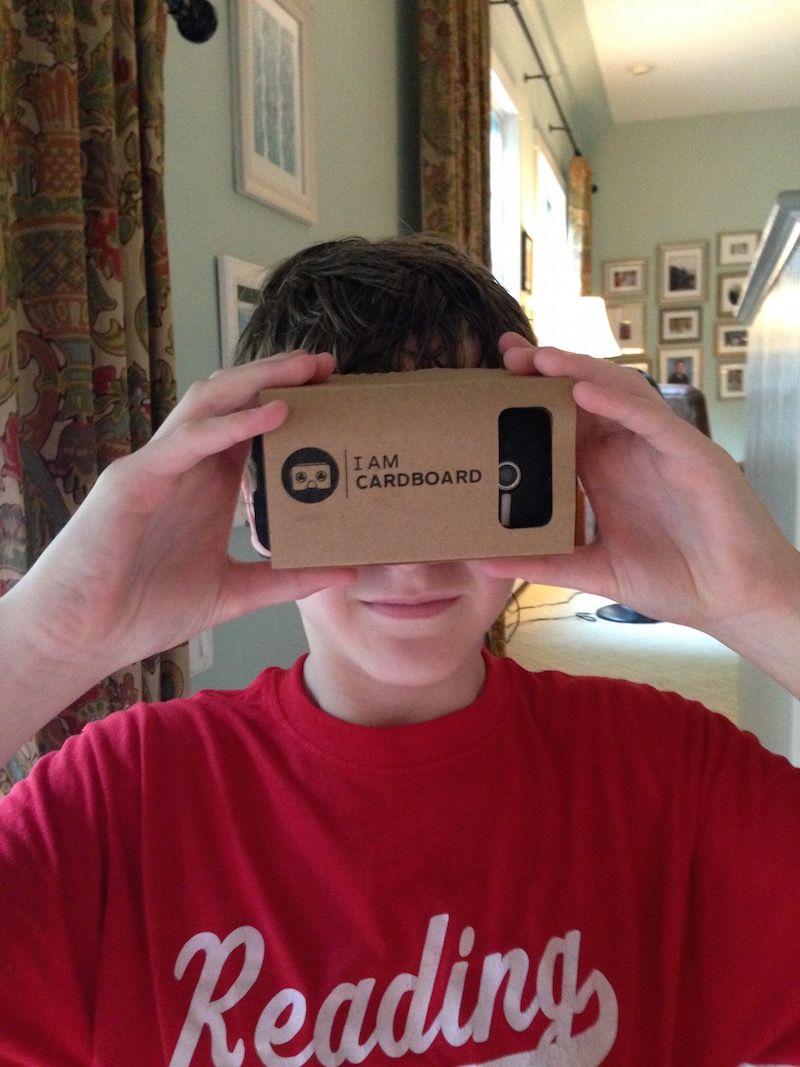When Google Cardboard was released last year, I remember thinking: interesting, but no time to play. I’d almost forgotten about the project when my 8th grader mentioned his interest in virtual reality last Saturday. Since my youngest son’s interest in technology does not extend much beyond keeping up with the latest news in baseball and playing sports video games, I ordered him a $15 kit to see what would happen.
I arrived home Tuesday to find virtual reality glasses attached to my son’s face. His mind was blown by the whole Cardboard experience, from the virtual worlds he explored to his ability to download new worlds / games via Google Play. The overall experience of Google Cardboard is surprisingly good, especially for a product created by attaching your smartphone to some lenses, magnets and cardboard. The 3D experience is solid, the head tracking smooth, and the ability to combine audio and visual into a virtual experience very powerful.
If you have at least a passing interest in VR, or have kids with an interest, getting started is simple:
Step 1: Purchase a Kit
Google does not actually make Cardboard, and instead publishes instructions for manufacturers to produce kits (alternatively you can build your own from the instructions). If you choose to purchase a kit, there are two versions available: the original Android-only kit, and the newer 2.0 kit that supports larger smartphones and iOS. The kits can be purchased from a reseller or direct from a manufacturer. I purchased my original I Am Cardboard kit from Amazon for $15, and then later purchased an additional I Am Cardboard 2.0 kit direct from the manufacturer for $20 plus shipping.
Step 2: Download Apps
You will find lots of applications for Android on Google Play. Finding the iOS applications on AppStore however will take a little Googling. My personal favorite application is Otherworld, which puts you in a haunted room inhabited by two toy dolls (warning: not recommended for people with a fear of creepy dolls).
Step 3: Assemble "Headset"
For a more immersive experience, you will want to attach headphones. If you have noise cancelling headphones, it makes for an even better experience. Insert the headphone jack into your phone, your phone into Cardboard, and voilà, you have a poor man's version of Oculus Rift.
Step 4: Explore
Start an application, hold the glasses to your eyes, and enjoy exploring virtual reality for less than $20.
My wife said after trying them: "I can't believe Google re-invented the Viewmaster."
